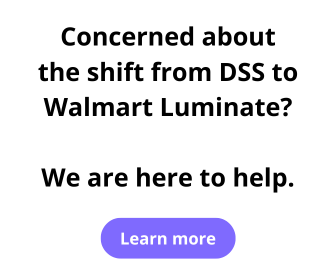Optimizing Store Inventory Could Be As Simple As Pack Size
Pack size can have a significant impact on Inventory, product flow, order smoothness, transportation cost, and product cost. The rules for pack sizes help ensure that the product is able to flow from the truck directly to the shelf.
Supply Chain KPIs – Pack Size
Pack size can have a significant impact on Inventory, product flow, order smoothness, transportation cost, and product cost. The rules for pack sizes help ensure that the product is able to flow from the truck directly to the shelf once it arrives at the store.
Below are explanations of the various pack types:
- Vendor Packs (VNPK) — A Vendor Pack, or Outer Pack, are packages that arrive from the supplier to Walmart distribution centers. Vendor pack quantity is expressed as the total number of selling units in the case. If the pack that leaves your warehouse is the same pack that arrives at the store, then your vendor pack is the same as your warehouse pack.
- Warehouse Packs (WHPK) — A Warehouse Pack is a package that is shipped from the warehouse to the stores. Warehouse pack quantity is expressed as the total number of selling units in the box that is shipped from the warehouse to the store.
- Breakpacks — A Breakpack is a configuration where the supplier ships a package to the distribution centers, the warehouse opens the package, which contains additional inner packs. The individual inner packs can then be shipped from the warehouses to the individual stores. The breakpack configuration is useful in scenarios where it is not necessary to send a full Vendor Pack to stores and/or the Vendor Pack size is too small to be conveyable.
Think of it this way: A Vendor Pack is the minimum number of selling units that a warehouse can receive. A Warehouse Pack is the minimum number of selling units that a store can receive. Warehouses can't receive partial VNPKs and stores can't receive partial WHPKs.
"Pack and a Half" Rule
The "Pack and a Half" rule can help make decisions on optimal pack size. The general idea is that Walmart's shelves should be able to hold at least one and a half packs of merchandise. For example, if Walmart's shelf can hold 6 units, it is ideal to ship in packs of 4 or less (4 x 1.5 = 6). This helps to ensure that the product is able to flow from the truck directly to the shelf once it arrives at the store.
"Two Pack" Rule
If you sell a product that is packaged in shelf-ready packaging, the product should be compliant with the "Two Pack rule". The idea with this rule is that two entire shelf-ready packs should be able to fit on the shelf at once. That way, when the first pack sells through, the next pack can be pulled forward for customers to shop until the new shelf-ready pack arrives and can be placed directly on the shelf.
For example, if Walmart's shelf can hold 8 units, it is ideal to ship in packs of 4 or less (4 x 2 = 8). This helps to ensure that the product is able to flow from the truck directly to the shelf once it arrives at the store and keeps shelves shelves looking clean.
Note: It's important that you work with your Buyer and Replenishment Manager before making any changes to your vendor pack or warehouse pack size.
Receive notifications of new Walmart inititives, supplier resources and educational articles — delivered to your inbox!
Additional Articles
Walmart has their own language, that's no secret. But, did you know that quite a few of these acronyms and account metrics that you hear discussed are actually common retail metrics, not just Walmart metrics?
The evolution of consumer shopping patterns, including the rise of online shopping and the demand for personalized experiences has given Walmart access to a wealth of omnichannel data.
